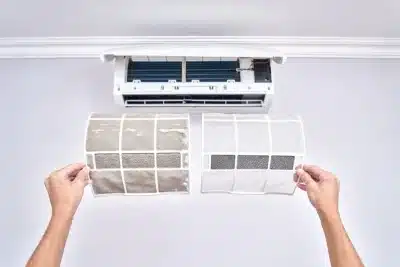
Parking lot striping is vital in maintaining order and safety in parking areas. These painted lines serve multiple purposes, including guiding drivers into spots, identifying parking spaces, and directing traffic flow. Parking lots could quickly become chaotic and potentially dangerous for vehicles and pedestrians without proper striping.
Beyond these essential functions, parking lot striping contributes significantly to the overall functionality of parking areas. It helps maximize space utilization, ensures compliance with local regulations and accessibility requirements, and can even impact a property’s aesthetics and perceived professionalism. Understanding the importance of parking lot striping is crucial for property owners and managers who want to maintain safe, efficient, and appealing parking facilities.
What Are The Key Benefits Of Parking Lot Striping?
Parking lot striping offers several key benefits that contribute to parking areas’ functionality and safety. One of the primary advantages is improved traffic flow. By marking parking spaces, driving lanes, and directional arrows, striping helps drivers navigate the lot more efficiently and reduces the risk of accidents.
Another significant benefit is enhanced pedestrian safety. Striping can designate crosswalks, walkways, and no-parking zones, making it easier for pedestrians to move safely through the parking lot. This is particularly important in busy areas with high foot traffic, such as shopping centers or office complexes.
Additionally, parking lot striping can maximize the use of available space. By clearly defining parking spaces, property owners can ensure the lot is used to its total capacity, reducing the likelihood of overcrowding or inefficient use of space.
How Does Parking Lot Striping Help With ADA Compliance?
Parking lot striping is crucial in ensuring compliance with the Americans with Disabilities Act (ADA). The ADA requires that parking lots provide a certain number of accessible parking spaces for individuals with disabilities, depending on the total number of spaces in the lot.
These accessible spaces must be marked with specific striping and signage. The striping typically includes a wide access aisle adjacent to the parking space, allowing individuals with mobility devices to enter and exit their vehicles quickly. The access aisle is usually marked with diagonal lines to indicate that it should be kept clear of cars.
Properly striping accessible parking spaces and access aisles can help property owners ensure that their parking lots are ADA-compliant and accessible to all users. Failure to provide adequate, accessible parking can result in fines and legal action, making proper striping essential for compliance and inclusivity.
What Factors Should Be Considered When Planning Parking Lot Striping?
Several factors must be considered when planning parking lot striping to ensure the best possible outcome. One of the most important considerations is the layout of the parking lot. The striping plan should optimize the available space while providing safe and efficient traffic flow. This may involve determining the appropriate size and angle of parking spaces and the placement of driving lanes and directional markings.
Another key factor is the choice of materials. Parking lot striping can be done using various paint or thermoplastic marking materials. The selection should be based on durability, visibility, and cost-effectiveness. For example, thermoplastic markings are often preferred in high-traffic areas due to their long-lasting nature and resistance to wear and tear.
Finally, it’s essential to consider the property’s and its users’ specific needs. This may include accommodating accessible parking spaces, designating areas for different types of vehicles (such as compact cars or motorcycles), or incorporating branding elements into the striping design. By taking these factors into account, property owners can create a parking lot striping plan that is both functional and visually appealing.
How Often Should Parking Lot Striping Be Refreshed?
Over time, parking lot striping can fade, chip, or wear away due to exposure to the elements, heavy traffic, and other factors. It’s important to refresh it periodically to maintain its effectiveness and appearance.
The frequency of restriping will depend on various factors, such as the amount of traffic the lot receives, the type of materials used, and the climate conditions in the area. Generally, it’s recommended to inspect the striping annually and refresh it as needed, typically every 1-3 years.
However, if the lot experiences heavy use or is located in an area with harsh weather conditions, more frequent restriping may be necessary. Signs that it’s time to refresh the striping include significant fading, peeling, or damage to the lines and reduced visibility at night or in wet conditions.
By staying on top of parking lot striping maintenance, property owners can ensure that their lot remains safe, functional, and visually appealing for years.
What Are The Consequences Of Neglecting Parking Lot Striping?
Neglecting parking lot striping can seriously affect property owners, businesses, and users. One of the most significant risks is increased liability. Accidents and injuries are more likely to occur if the striping is inadequate or has deteriorated to the point where it no longer effectively guides traffic or designates parking spaces. In the event of an incident, the property owner may be held liable for failing to maintain a safe environment.
Another consequence of neglected striping is reduced parking efficiency. When lines are faded or unclear, drivers may park improperly or take up more space than necessary, leading to fewer available spots and increased frustration among users. This can be particularly problematic for businesses, as customers may be deterred from visiting if they consistently need help finding parking.
In addition to these practical concerns, neglecting parking lot striping can also negatively impact a property’s overall appearance and perception. Faded, chipped, or inconsistent striping can make a lot look poorly maintained and uninviting, potentially affecting property values and tenant satisfaction.
To avoid these consequences, property owners must prioritize regular parking lot striping maintenance and promptly address any issues. By doing so, they can maintain a safe, efficient, and attractive parking environment for all users.
Ensuring Your Parking Lot Is Properly Striped
Now that you understand the importance of parking lot striping and the factors to consider when maintaining it, it’s time to take action. Assess your parking lot’s current striping condition and determine if it’s due for a refresh. If you need help with the best course of action or assistance with the striping process, consult a professional parking lot maintenance company to ensure your lot remains safe, efficient, and compliant.








